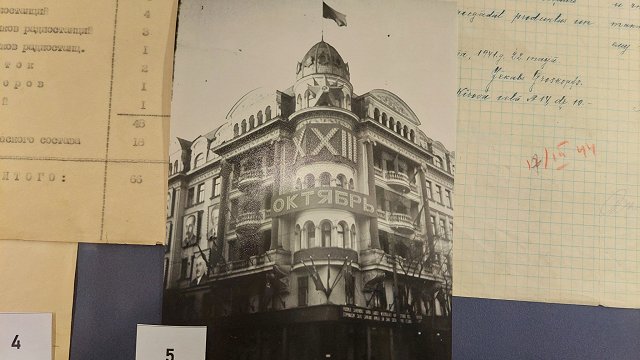''The Soviet secret bunker number 100 is still a kind of secret today. What's so special about it? It was a specific service shelter for railway workers who had to continue to operate in exceptional circumstances. For the time being, we don't really know what the number 'Object Number 100' name means. In any case, many people did not know about the existence of this shelter at the time, and many are still unaware of it today," says Toms Altbergs, a representative of the state-owned railway company Latvian Railways (Latvijas dzelzceļš).
While the bunker would likely make an excellent tourist attraction (like the bunker that is already open to the public at Līgatne, for example), the fact that technical equipment still important to the railway system is located there makes it impractical to open it up to the public.
The entrance is via a very long hidden corridor at the end of which is a special reinforced, airtight door. Constructed in 1958 with the Cold War well under way, it is not especially deep underground but features an exceptionally thick concrete roof intended to protect anyone inside as the bombs rained down outside.
As well as living quarters, the electricity generator, air purifier and other technical equipment, the bunker contains a series of small offices from which railway managers were expected to keep planning and controlling the railway schedules, notwithstanding the probably apocalypse a few meters above their heads.
“Such small booths are connected with the direct functioning of the railway. Railroad dispatchers are the people who control the timetables. There are small tables where they could draw up train schedules, and organize how, in the next hours or days trains could run under such extraordinary circumstances,” says Altbergs.
Under such circumstances, the railway dispatchers in Rīga would be in charge of a large and strategically significant region including not only in Latvia, but also Kaliningrad, Lithuania and Estonia.
Altberg points out one special piece of technical equipment in particular.
“It could be called a kind of computer. This machine was designed to figure out how long they should stay underground by feeding in a number of parameters, such as wind speed and the place where a bomb was dropped. ”
Though built to withstand the most terrifying forces ever brought within man's control, Object Number 100 now faces possible destruction for a much more positive reason. Construction of the Rail Baltica high speed railway line connecting the three Baltic states will require an extensive overhaul of Rīga Central Station, with the likelihood that the bunker will have to be dismantled during the works. But given the the thickness of the walls and ceiling, the demolition crews may need to display atomic strength themselves to undo the work of their predecessors 60 years earlier.
You can see LTV's intrepid reporter walking the abandoned rooms of the bunker in the video above.

































